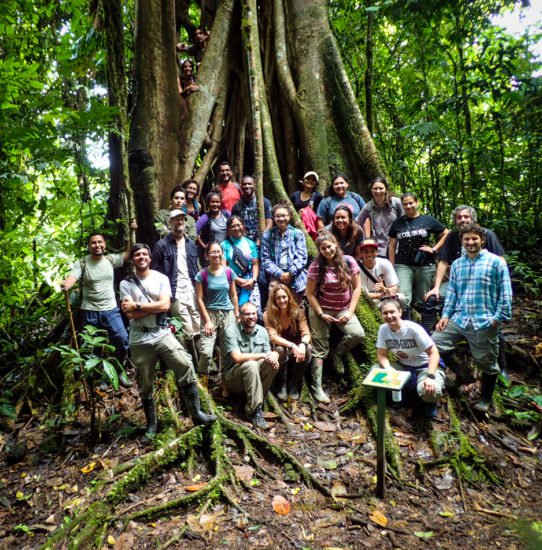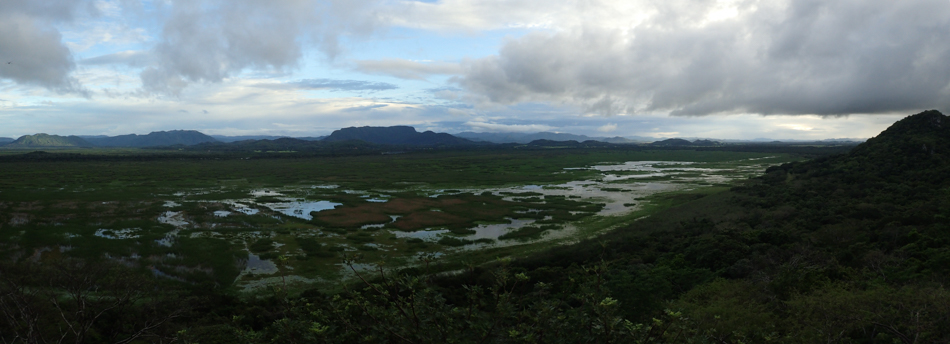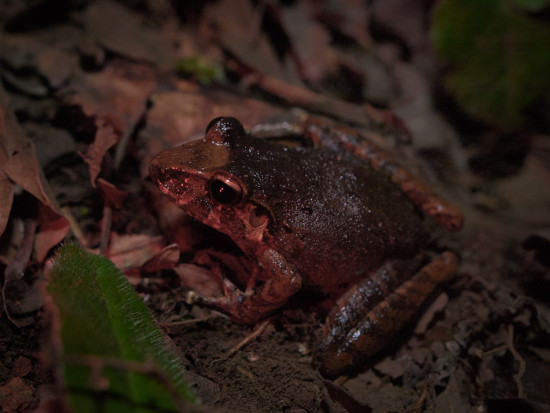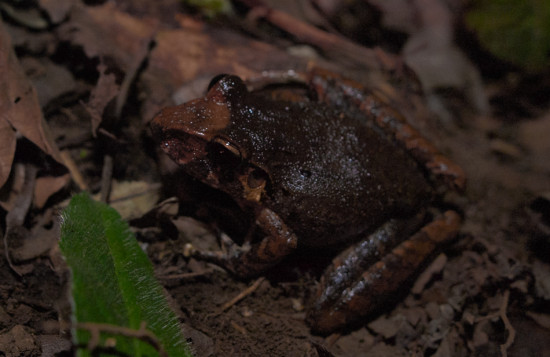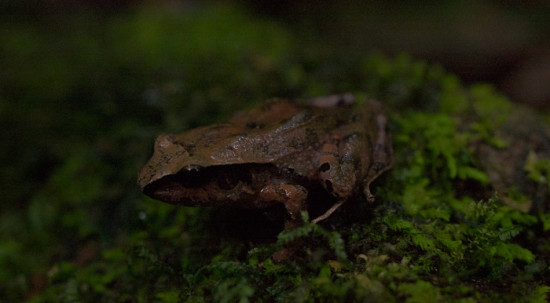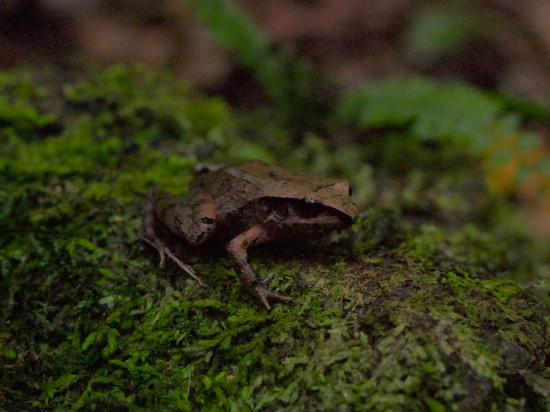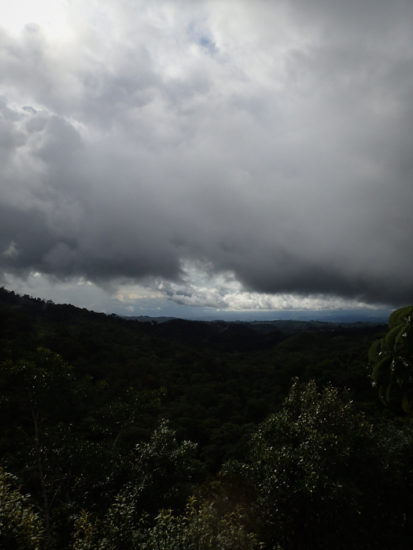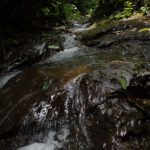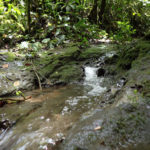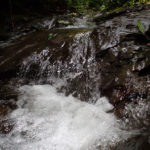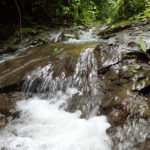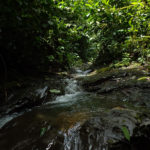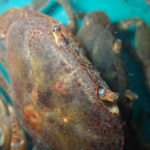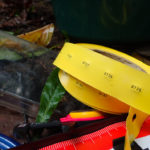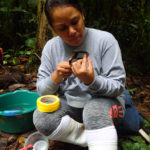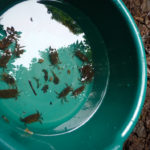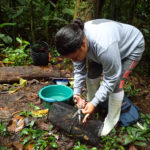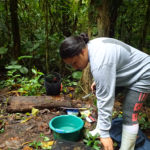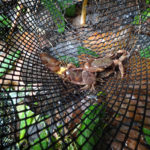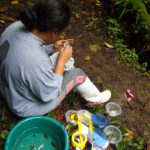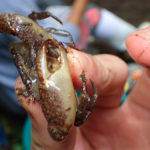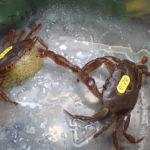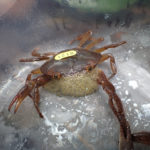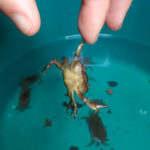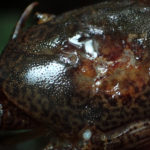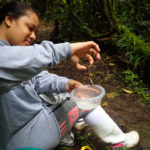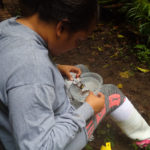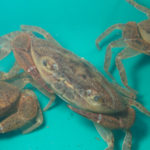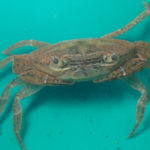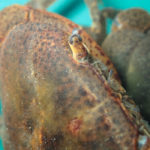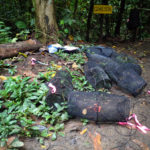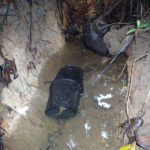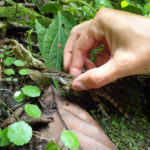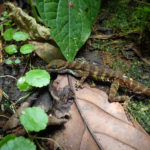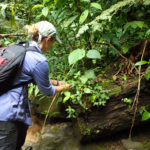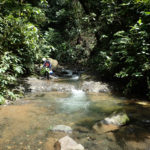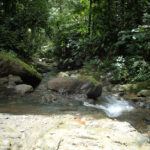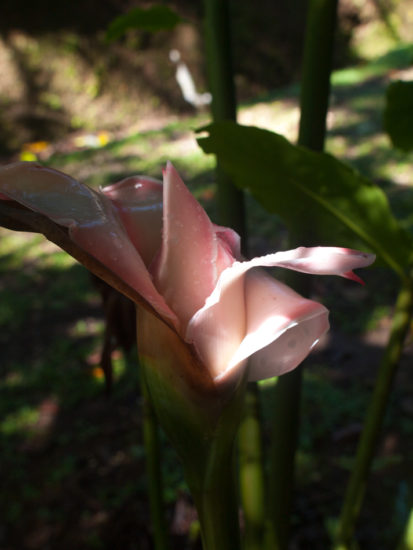The “before” photograph at the large fig of field mentors, coordinators, and students working in this summer’s REU at Las Cruces.
Tag Archives: Costa Rica
Panorama from La Roca
Sunset at La Roca
I’ve captured a new sunset timelapse from Palo Verde using an Olympus Tough Stylus TG-4 set to capture a single image every 10 seconds and combining the images with iMovie.
The first video displays each of 149 photos for 0.1 secs, while the second video displays photos for 0.2 secs and appears more choppy.
These two videos joins several others that I produced and posted in 2009:
Craugastor underwoodi
A common rain frog throughout much of the mid-elevations in Costa Rica, Craugastor underwoodi is abundant in Las Cruces.
Tower view at Las Cruces
West Branch of Río Java
Marking crabs
June, one of the NAPIRE students, measures and marks crabs (Allacanthos pitteiri) she’s caught with baited minnow traps. Her project has a lab focus too: she is investigating size and sex differences in coarse particulate organic matter (leaf) shredding behavior by presenting male and female crabs that vary in size with stream conditioned leaves and measuring how much they consume, or shred. This parallels a project another student performed in 2013, Joseph Jack, although Joseph varied leaf species and conditioning time.
Last year, Jerry studied predation risk in crabs and measured crab densities in stream pools. While he marked the crabs with nail polish as a mark-recapture method, the small labels June used have individual numbers (her mentor, Anne Brasher, brought them and has used them extensively with snails), which is a powerful tool.
An interesting observation: some of the crabs seemed to have rust-colored lesions on their carapace that look similar to lesions we often found on crayfish (Orconectes obscurus) caused by a chitin-eating bacteria, isolated (or at least studied) by Adam Leff’s lab at Kent State.
Another Pug-nosed Anole
The first Norops capito I posted about was in 2010. Here’s another, found on my birthday of this year (2016) and caught by Bree, a NAPIRE mentor: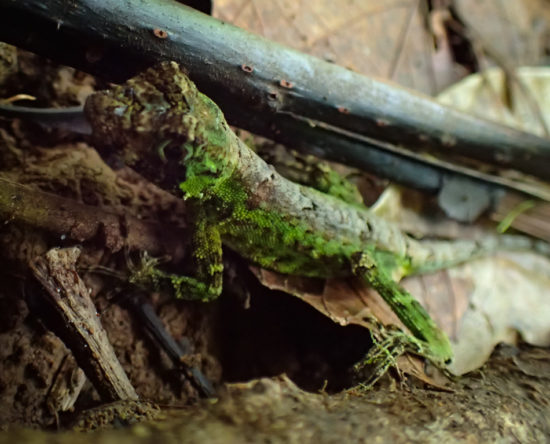
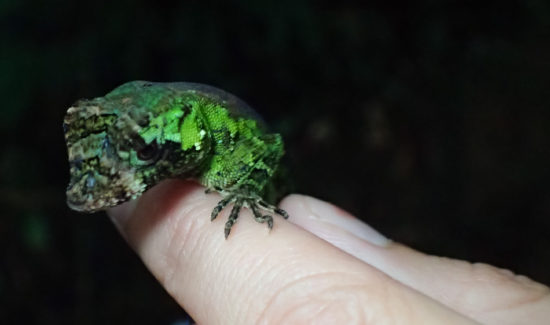
Releasing stream anoles
Two of the mentors for NAPIRE have students working on projects centered around the stream anole, Norops aquaticus. After their capture, the males are often brought back to the field station to mark and perform various behavioral assays with them. They are released, unharmed but often exhausted, at the same site they are capture a couple of days later.

